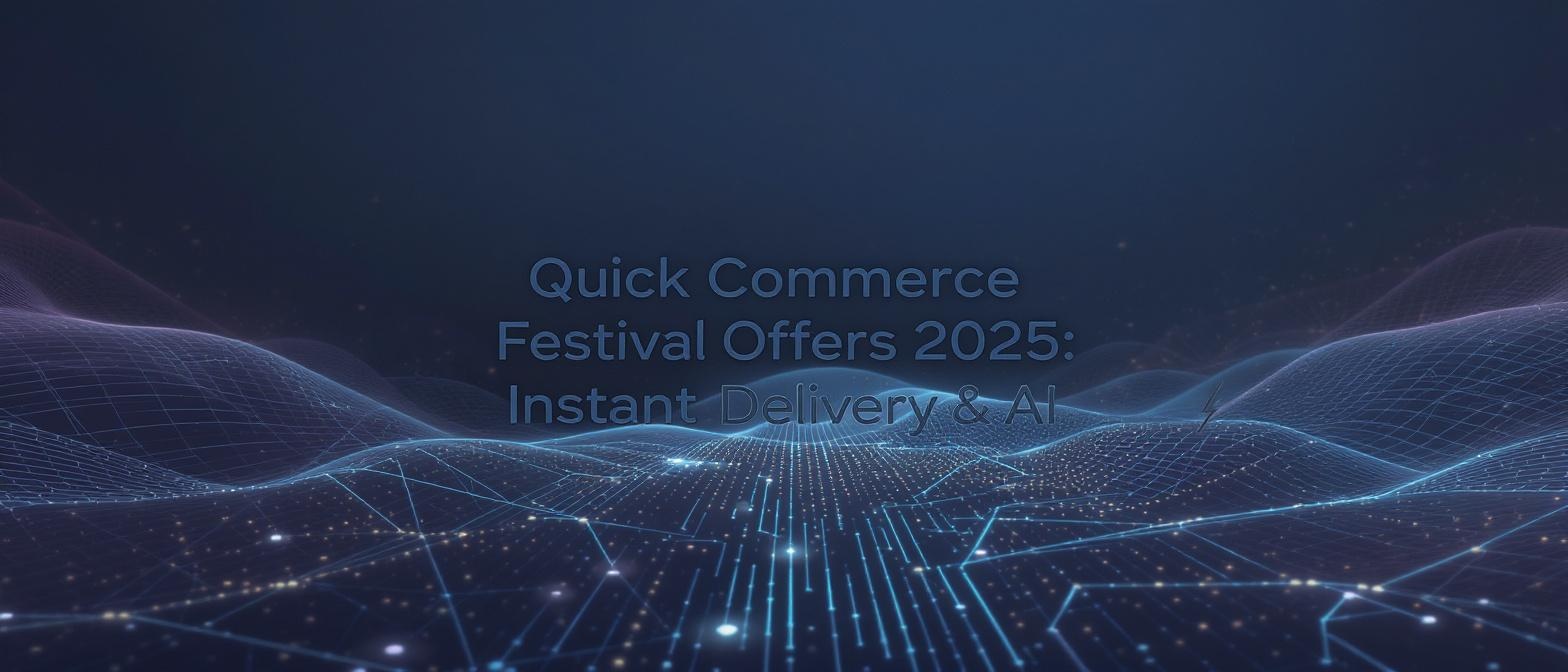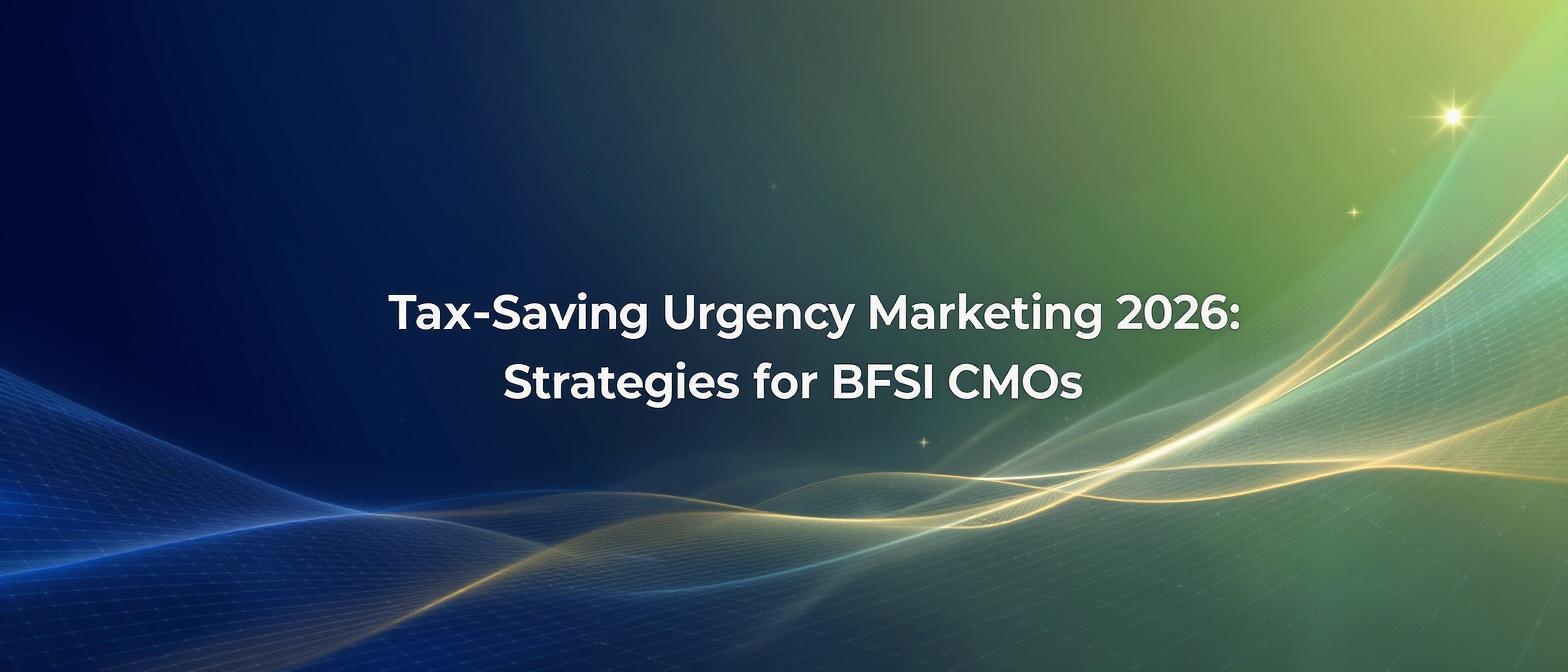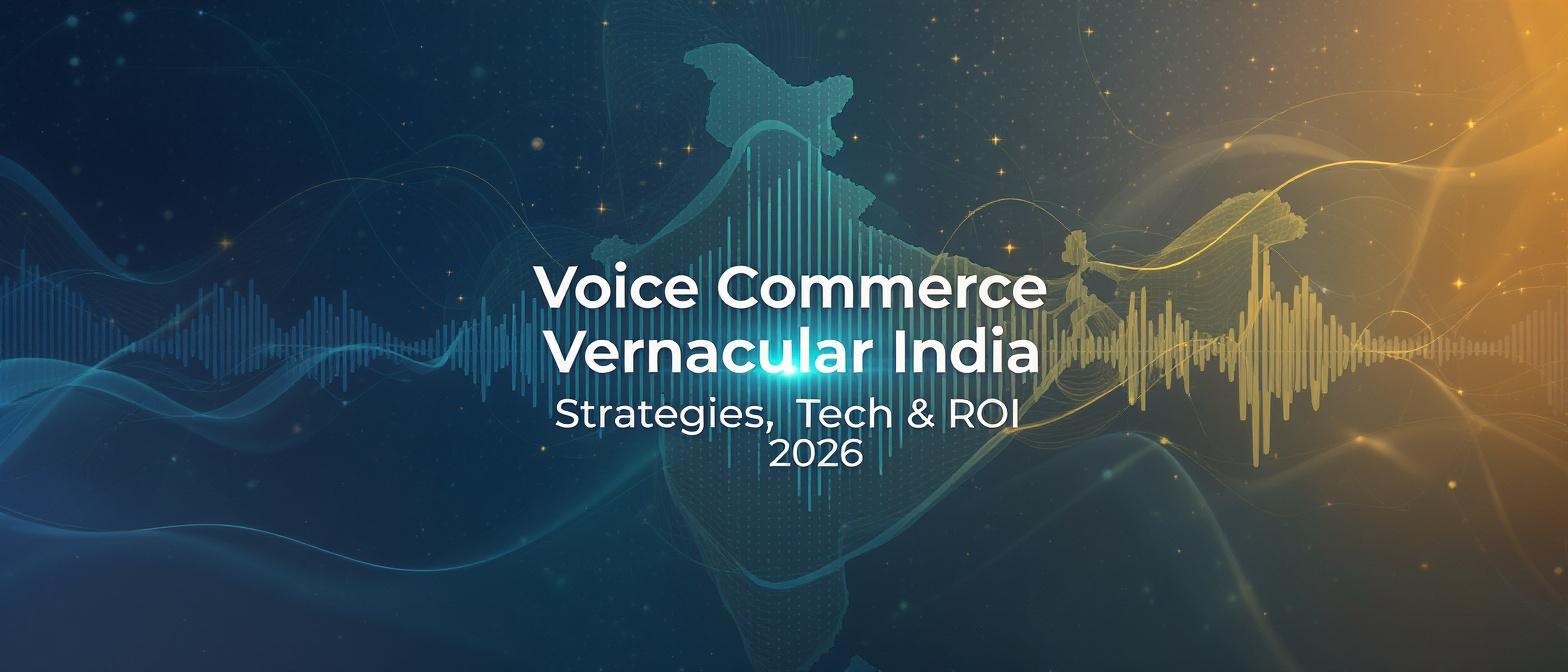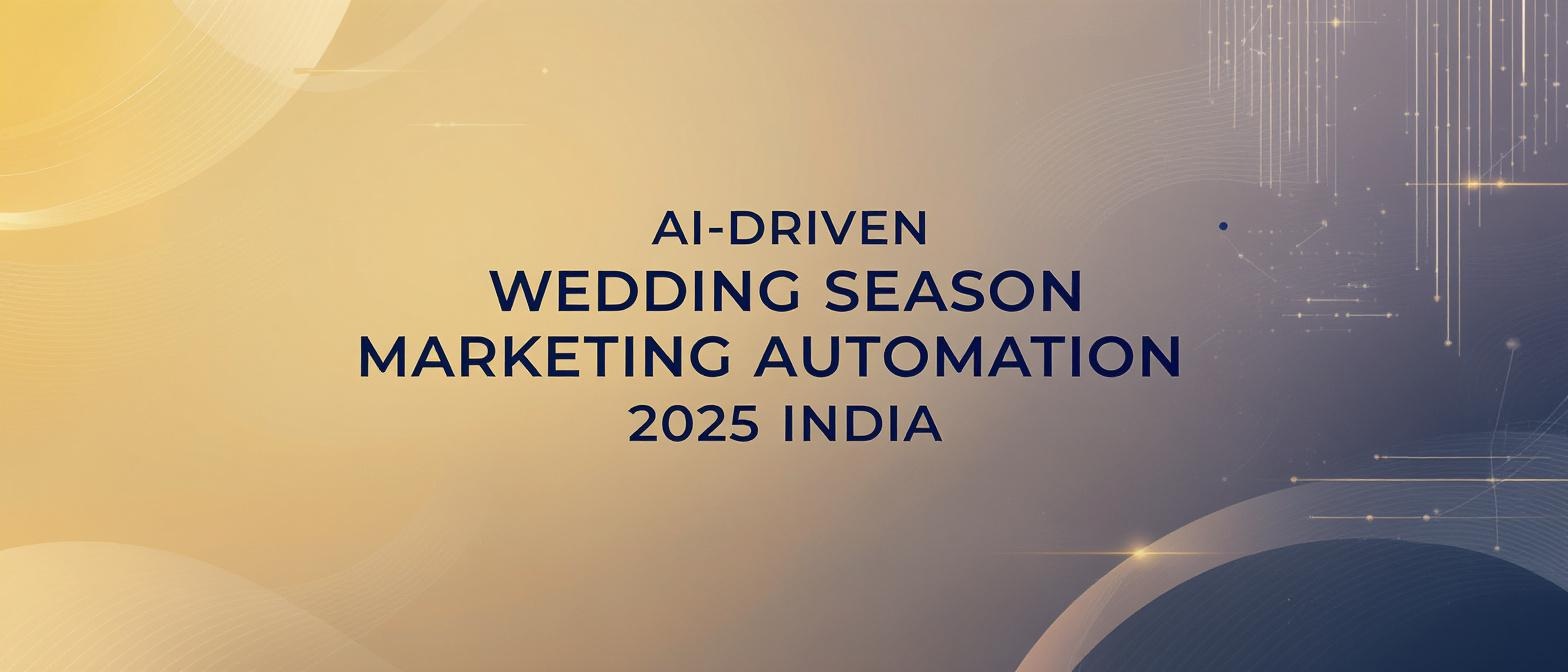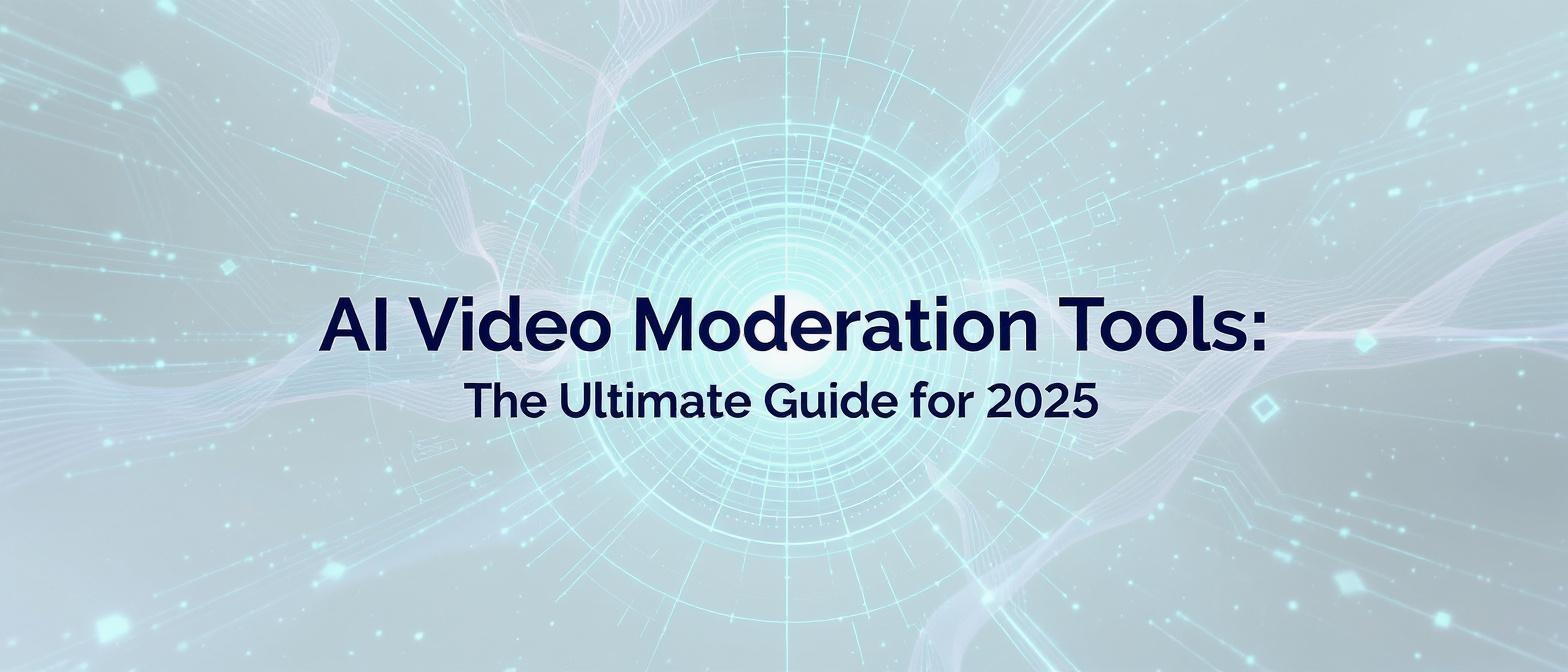Quick Commerce Festival Offers 2025: Hyper-Personalized, 10-Minute Delivery Campaigns for Instant Gratification
Approx. 12 minutes reading time
Key Takeaways
- The demand for quick commerce festival offers 2025 focuses on ultra-fast delivery windows.
- Brands use instant gratification marketing to drive last-minute festive purchases.
- Hyper-personalization through generative AI video boosts engagement and ROI.
- Tier II and Tier III cities are shaping new hyperlocal campaign strategies.
- Real-time analytics and data ethics are crucial for sustainable growth.
The festive season in India is no longer just a date on the calendar; it's a high-stakes, high-speed retail battleground. The arena for this battle has shifted dramatically to the screens of our smartphones, where quick commerce festival offers 2025 are redefining consumer expectations. These are not your typical week-long sales; they are time-sensitive, hyper-localized promotions on everything from last-minute gifts to festive essentials, delivered to doorsteps in a stunning 10- to 30-minute window during peak celebrations like Diwali, Navratri, and Eid.
This shift is fueled by a powerful consumer demand: the need for now. The era of instant gratification marketing in India has arrived, driven by rising expectations and a surge in spontaneous, last-minute festive purchasing. The 2024 Diwali season saw a staggering 24% spike in e-commerce orders, with quick commerce platforms growing an astonishing 120%. This explosive growth signals a permanent change in how brands must approach their festive campaigns. Consumers don't just want good deals; they want them delivered almost immediately, creating a fertile ground for innovative platform-exclusive festival deals.
As we look towards the 2025 festive season, the playbook is evolving once again. This article will explore the maturation of quick commerce partnerships, the groundbreaking role of generative AI and personalized video in creating unforgettable customer experiences, and the critical strategies for tracking ROI and fostering long-term loyalty in this fast-paced ecosystem.
Source: www.market-xcel.com
Source: www.financialexpress.com
The Evolution of Hyperlocal Festival Campaigns in Quick Commerce
The initial phase of quick commerce was about one thing: speed. Today, it has evolved into a sophisticated ecosystem where D2C and FMCG brands execute highly strategic, hyperlocal festival campaigns. The partnerships between brands and delivery giants like Blinkit, Zepto, and Swiggy Instamart have matured from simple listings to deeply integrated marketing collaborations.
We now see brands like mCaffeine and The Man Company launching curated gift kits and offering last-mile customization directly through these platforms. Imagine ordering a grooming kit for your brother during Raksha Bandhan and having it arrive in 15 minutes, complete with a personalized note. This is the new standard for quick commerce festival offers 2025.
The Rise of Tier II and Tier III Cities
A pivotal trend shaping these campaigns is the explosive growth outside of metro areas. Projections for 2025 indicate that a massive 55% of all festive quick commerce orders will originate from Tier II and III cities. This demographic shift is forcing brands to rethink their strategies, moving beyond one-size-fits-all promotions to more targeted, neighborhood-specific offers.
- Geo-fenced Advertising: Brands are using precise location data to push relevant ads to consumers within specific localities, showcasing deals available from the nearest dark store.
- On-App Notifications: Platforms send push notifications about festival deals that are tailored to a user's past purchase history and current location, creating a sense of immediate relevance.
- Case Example: mCaffeine's "Glow & Go" Kit: During Diwali, the D2C brand launched an exclusive wellness bundle on quick commerce apps. The campaign targeted specific urban neighborhoods known for a high density of young professionals, resulting in a significant uplift in sales from last-minute gift shoppers.
- Case Example: The Man Company's "Urban Diwali" Packs: This campaign featured grooming kits delivered in under 15 minutes, specifically targeting young men in Tier II cities who are increasingly adopting premium personal care products.
This evolution demonstrates that success in 2025 is not just about being fast; it's about being fast, relevant, and local.
Source: www.storyboard18.com
Source: www.financialexpress.com
10-Minute Delivery Personalization: The New Frontier of Instant Gratification
The promise of 10-minute delivery has set a new baseline for convenience. Now, the challenge is to make that ultra-fast experience personally meaningful. This is where 10-minute delivery personalization comes into play—the art and science of tailoring offers, packaging, and messaging in real-time, within that sub-10-minute fulfillment window. It’s the ultimate expression of instant gratification marketing in India.
This goes far beyond simply using a customer's first name in an email. Modern personalization tactics include:
- Custom Greeting Cards & Gift Wrap: Automatically adding a personalized card or selecting a specific gift wrap option based on the customer's profile or the occasion.
- Dynamic Bundling: Offering real-time product bundles based on what's in the user's cart and what's trending in their specific PIN code.
- Personalized Video Messages: Embedding unique video messages from influencers or celebrities directly into the post-purchase experience.
Scaling Personalization with Generative AI Video
Delivering thousands of unique video messages sounds impossible, but generative AI has made it a reality. Platforms like TrueFan AI enable brands to create hyper-personalized videos at an unprecedented scale, directly integrating with quick commerce platforms to deliver powerful quick commerce video offers.
TrueFan AI's capabilities are a game-changer for festive marketing. With 175+ language support and Personalised Celebrity Videos, brands can now connect with customers in their native tongue, retaining perfect lip-sync and the celebrity's authentic voice. Key features include:
- Hyper-Personalization at Scale: By integrating with a brand's CRM via API, the platform can generate one-to-one videos that include the customer's name, city, and even reference a recent purchase. A celebrity could say, "Hi Priya in Bangalore, hope you enjoy the Diwali sweets you just ordered!"
- Virtual Reshoots & AI Editing: Brands can A/B test different promotional lines, like swapping “50% off” for “Buy 1 Get 1 Free,” without needing to conduct expensive and time-consuming new photoshoots.
- Proven Engagement Uplift: The impact is measurable and significant. Case studies show a 3.2x higher engagement rate when a celebrity mentions the customer's name within the first five seconds of a video, creating an immediate and powerful connection.
This level of on-demand personalization transforms a transactional delivery into a memorable brand experience, turning a simple purchase into a moment of delight.
Source: YouTube
Source: TrueFan AI Case Studies
Crafting Urgency: Innovative Offer Marketing Strategies
In the world of quick commerce, where attention spans are fleeting, creating a sense of urgency and exclusivity is paramount. The most successful brands are moving beyond generic discounts to deploy sophisticated offer marketing strategies that leverage the unique capabilities of instant delivery platforms.
Platform-Exclusive Festival Deals
Creating a "fear of missing out" (FOMO) is a powerful driver of impulse purchases. Brands are increasingly launching platform-exclusive festival deals that are only available for a limited time on a specific quick commerce app.
- App-Only Coupon Codes: Unique discount codes that can only be redeemed within the Blinkit, Zepto, or Instamart app.
- Membership-Tiered Bundles: Offering special product bundles or deeper discounts exclusively for premium members of a platform, like Zomato Gold or Swiggy One.
Neighborhood-Specific Offers and Promotions
Leveraging the hyperlocal nature of dark stores, brands can now deploy dynamic neighborhood-specific offers. These promotions are surfaced to users based on their PIN code and can be adjusted in real-time according to local inventory levels and demand. If a particular dark store has an excess of a certain type of festive sweet, a targeted offer can be pushed to users in that delivery zone to clear the stock.
The Power of Rapid Fulfillment Marketing Automation
Behind these dynamic offers lies a powerful engine of rapid fulfillment marketing automation. This technology connects real-time inventory data, user behavior, and communication channels to deliver perfectly timed promotions.
- Automated Push Alerts: A user who abandons a cart with festive decorations might receive a push notification 30 minutes later saying, "Still decorating? Get 20% off your cart for the next hour!"
- WhatsApp Business API Integration: This is a key channel for same-hour delivery promotions. Imagine receiving a personalized video via WhatsApp from a celebrity saying, "Hurry - there's only one hour left to get this amazing Diwali sweets deal delivered to your door!"
- Case Study: Nike's Real-Time Inventory Sync: In Southeast Asia and India, Nike integrated its inventory systems with quick commerce platforms. This allowed them to execute festival-specific product drops in major metros, with real-time stock availability ensuring a seamless purchase and delivery experience, driving huge engagement among younger audiences.
These strategies transform offer marketing from a static, pre-planned activity into a dynamic, responsive conversation with the consumer.
Source: www.market-xcel.com
The Technology Backbone of 10-Minute Festival Offers
Delivering a personalized offer to a customer's doorstep in under 30 minutes is a complex technological symphony. Every part of the process, from discovery to delivery, is powered by sophisticated AI and automation, making ambitious hyperlocal festival campaigns a reality.
At the core of this revolution are several key technologies:
- AI-Powered Product Recommendations: When you open a quick commerce app during a festival, the products you see are not random. AI engines analyze your past purchases, browsing history, and real-time demand trends to surface the most relevant items, from puja essentials to gifting options.
- Dynamic Pricing Engines: During flash sales or periods of high demand, AI algorithms can adjust prices in real-time to optimize sales and manage inventory, ensuring that popular items don't sell out too quickly while maximizing revenue.
- Route-Optimized Logistics: The 10-minute delivery promise is only possible thanks to advanced logistics algorithms. These systems constantly calculate the most efficient routes for delivery riders, factoring in traffic, weather, order batching, and dark store inventory levels to meet the stringent service-level agreements (SLAs).
Integrating AI for Next-Level Marketing
Beyond logistics, technology is also transforming the marketing side of the equation. The key is seamless integration between platforms, enabling rapid fulfillment marketing automation at scale.
Solutions from companies like TrueFan AI provide custom tools and integrations that plug directly into a brand's marketing stack:
- CRM and Mobile App Webhooks: These integrations allow for real-time triggers. For example, a customer completing their first purchase on a quick commerce app can automatically trigger the generation and delivery of a personalized "welcome" video from a brand ambassador. Similarly, a cart abandonment event can trigger a "come back" video offer.
- Interactive Digital Billboards: The technology now exists for out-of-home advertising to become personal. A loyalty member could walk into a partner retail store and be greeted by name on a digital screen, with a personalized offer delivered to their phone, powered by the same backend that drives the quick commerce experience.
This deep integration of technology ensures that every touchpoint in the customer journey is smart, responsive, and optimized for conversion.
Source: www.storyboard18.com
Measuring Success: Instant Delivery ROI Tracking and Retention
The speed of quick commerce demands equally fast and agile methods for measuring success. Traditional ROI models are too slow; brands need real-time insights to optimize campaigns on the fly. This is the core principle of instant delivery ROI tracking.
Modern analytics dashboards provide a granular view of campaign performance, capturing key metrics such as:
- Conversion Rate by Offer: Which specific discounts or bundles are driving the most purchases?
- View-Through Rates for Video Ads: How many people are watching the personalized videos, and for how long?
- Geo-Cohort Performance: Which neighborhoods or cities are responding best to specific campaigns?
- Time-to-Purchase: How quickly are customers converting after receiving a promotional push notification or video?
This data allows marketing teams to make informed decisions in minutes, not weeks. Solutions like TrueFan AI demonstrate ROI through advanced analytics that break down the performance of different personalization elements. A brand can see clear data on whether mentioning a customer's name versus their city had a greater impact on conversion, allowing for continuous optimization of creative strategies.
Beyond the Festival: Quick Commerce Retention Strategies
The ultimate goal of any festive campaign is not just to acquire new customers, but to retain them long after the celebrations are over. Smart brands are already planning their quick commerce retention strategies to build lasting loyalty.
- Post-Festival Loyalty Programs: Surprise customers with a cashback voucher or loyalty points delivered via a personalized "thank you" video a week after the festival, encouraging their next purchase.
- Early Access Previews: Reward high-value customers by giving them exclusive early access to the next major festival flash sale, making them feel like valued insiders.
- Subscription-Based Deliveries: For recurring festive needs, brands can offer subscription plans like a "Festive Essentials Box" that is delivered monthly, ensuring a steady stream of repeat business.
The data backs up this approach. Recent studies show that FMCG brands saw a remarkable 17% lift in repeat purchases when they used personalized retention videos, proving that a personal touch is key to building enduring customer relationships.
Source: www.market-xcel.com
Navigating the Hurdles: Challenges and Compliance Considerations
While the promise of instant, personalized delivery is immense, the path is not without its challenges. Executing these campaigns requires careful navigation of operational hurdles and a steadfast commitment to ethical practices. The most forward-thinking instant gratification marketing in India must be built on a foundation of trust and sustainability.
Data Ethics and the Consent-First Model
Hyper-personalization is powered by data, which places a significant responsibility on brands and their technology partners. Using customer data without explicit consent is not only unethical but also a legal risk, especially with the Indian Personal Data Protection (PDP) Bill setting new standards.
This is where compliance becomes a competitive advantage. For instance, TrueFan’s ISO 27001 and SOC 2 compliance ensures that all data is handled with the highest security standards. Critically, their platform operates on a consent-first model, where users must explicitly opt-in to receive personalized content, ensuring transparency and building consumer trust.
Balancing Margins and Growth
The aggressive discounts and promotions common during festival seasons can put significant pressure on margins. Brands must strike a delicate balance between offering compelling, urgency-driven deals and maintaining long-term financial sustainability. The goal is to create value, not just slash prices.
Operational Reliability Under Pressure
The biggest operational challenge is managing inventory and last-mile logistics during massive demand surges. The history of quick commerce is filled with lessons learned, such as the scaling challenges Blinkit faced in its early days. Success in 2025 will depend on robust inventory planning, reliable vendor partnerships, and sophisticated rapid fulfillment marketing automation systems that can predict demand and prevent stockouts.
Navigating these challenges successfully requires a holistic strategy that prioritizes ethical data handling, sustainable economics, and operational excellence.
Source: TrueFan AI Product Offerings Executive Document
Source: blinkitmart.com
Conclusion: The Future of Festive Shopping is Instant and Personal
The landscape of festive retail has been irrevocably transformed. Quick commerce festival offers 2025 are no longer a novelty but a fundamental expectation, blending the raw speed of 10-minute delivery with the emotional connection of hyperlocal targeting and the groundbreaking power of generative AI video personalization. The brands that win will be those who master this new paradigm of instant gratification marketing in India.
As we have seen, this new era is defined by mature partnerships, data-driven strategies, and sophisticated technology. The ability to launch platform-exclusive festival deals, deploy neighborhood-specific offers, and measure ROI in real-time is now table stakes. The true differentiator lies in creating moments of personal connection at scale. The enterprise suite offered by platforms like TrueFan—encompassing hyper-personalization, virtual reshoots, multilingual localization, and granular analytics—provides a clear blueprint for what next-generation festival campaigns can achieve.
The Outlook for 2026 and Beyond
The pace of innovation shows no signs of slowing. Looking ahead, we can anticipate even deeper integration of technology into the festive shopping experience:
- AR/VR Shopping: Imagine virtually trying on festive attire or previewing how decorations will look in your home, then having your selections delivered in minutes.
- Predictive Personalization: AI models will soon be able to forecast a user's gifting needs in advance of festival peaks, proactively suggesting the perfect gift for a family member based on past behavior and social cues.
The message for brands and platform partners is clear: the time to act is now. The strategies and technologies defining the 2025 season are the foundation for future success. Begin piloting personalized quick commerce festival campaigns today to build the expertise and infrastructure needed to lead the market in 2026 and beyond.
Frequently Asked Questions
What exactly defines a "quick commerce festival offer"?
A quick commerce festival offer is a time-sensitive promotion on goods—typically gifts, groceries, or festive essentials—that is delivered to the consumer within a 10- to 30-minute window. These offers are specific to festive periods like Diwali, Holi, or Eid and are executed through ultra-fast delivery platforms like Zepto, Blinkit, and Swiggy Instamart. They are characterized by their hyperlocal targeting, emphasis on instant gratification, and often involve platform-exclusive deals.
How are brands personalizing offers with such a short delivery time?
Personalization in quick commerce is achieved through rapid fulfillment marketing automation and API integrations. When an order is placed, a brand's system can instantly access customer data (with consent) to trigger actions like adding a custom-printed greeting card to the order, or more advanced tactics like generating a personalized thank-you video from a celebrity that is sent to the customer's phone via WhatsApp moments after the delivery is completed.
Is my data safe when I receive these personalized video offers?
Leading technology providers in this space prioritize data security and consent. For example, when creating personalized campaigns, platforms like TrueFan AI operate under strict data protection protocols like ISO 27001 and SOC 2. They employ a consent-first model, meaning brands must ensure customers have explicitly opted-in to have their data (like their first name) used for a personalized video, ensuring compliance with data privacy regulations.
What are "neighborhood-specific offers"?
These are promotions that are dynamically targeted to customers based on their specific PIN code or geographic area. Quick commerce platforms use their network of localized "dark stores" to manage inventory. If a particular store has a surplus of a certain item, a special offer for that item can be pushed exclusively to users within that store's delivery radius to encourage sales and optimize stock levels.
How can smaller D2C brands compete with large FMCG companies in quick commerce?
Quick commerce can level the playing field for smaller D2C brands by giving them direct access to a massive, engaged user base without needing a physical retail footprint. The key for smaller brands is agility and creativity. They can leverage the hyperlocal nature of these platforms to run targeted campaigns in specific neighborhoods, create unique and exclusive product bundles, and use innovative personalization tools to create a memorable customer experience that builds brand loyalty.
What is the next big trend we can expect in quick commerce for festivals?
The next major evolution will likely be "predictive commerce." AI will analyze user data to anticipate needs before the customer is even aware of them. For example, based on your purchase history from last Diwali, a platform could proactively create a suggested shopping cart with your usual festive essentials a week before the festival and offer a special discount to check out with a single click, taking convenience to an entirely new level.

